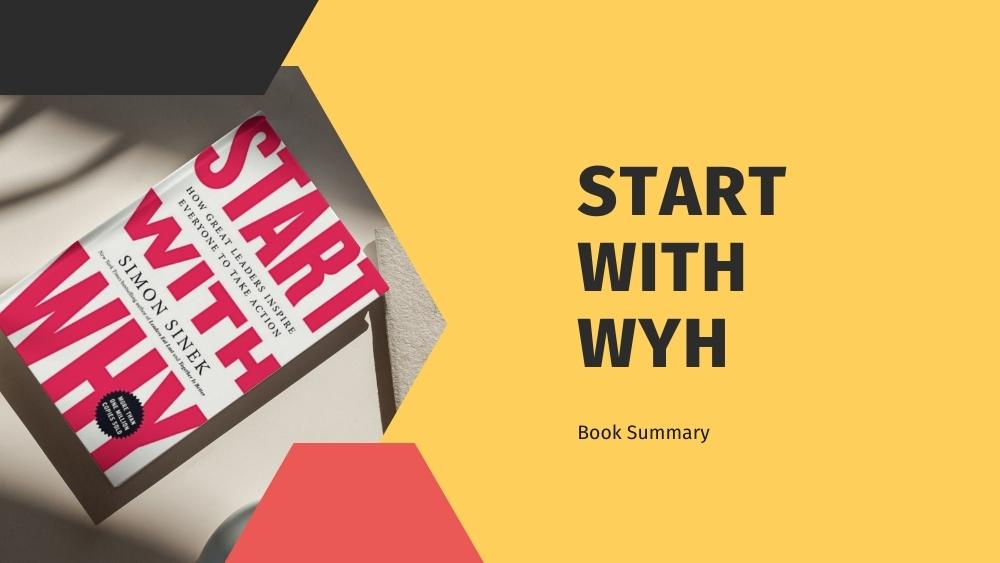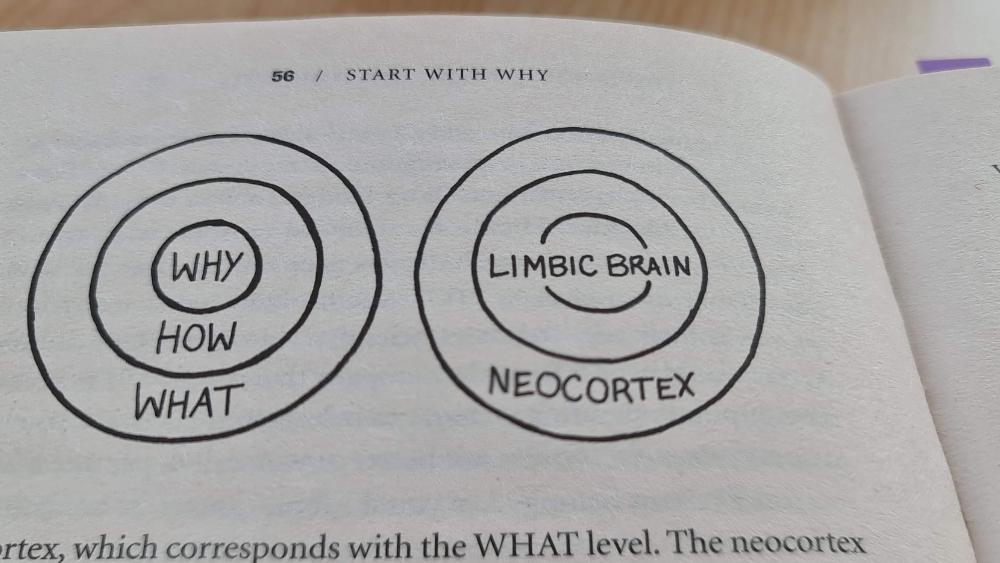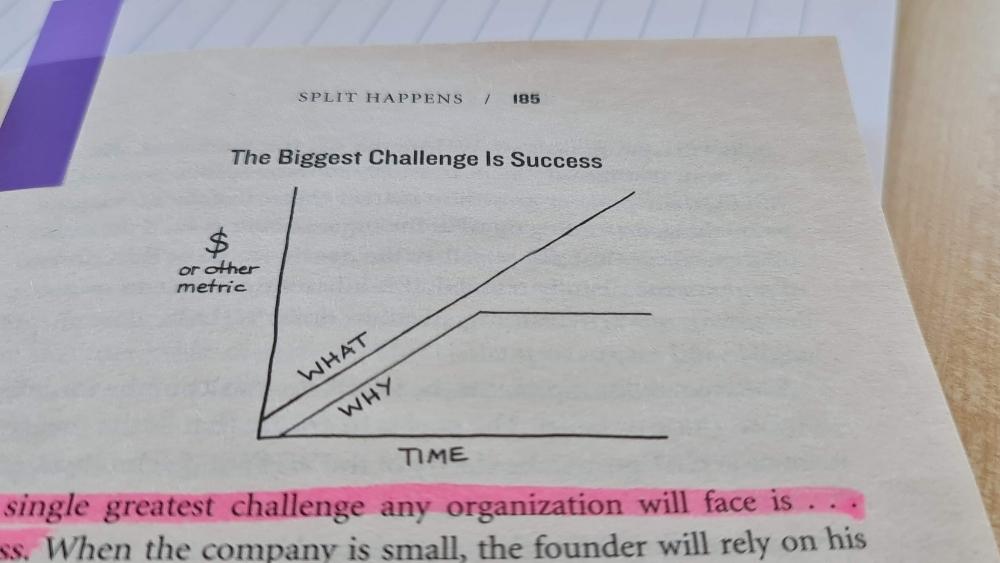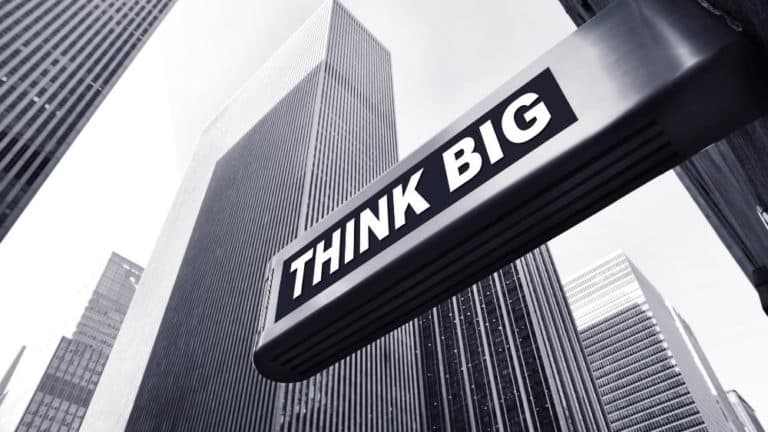Start With Why Summary: Unleashing the Power of Purpose
Hi there! If you want to understand better the power of purpose and how it can help advance your business – whatever role you may have in the organization- this Start with Why Summary is for you.
Simon Sinek’s business book offers many insights into creating a compelling vision, building meaningful connections with people around us, motivating teams toward success, and ultimately achieving great things together.

We’ll explore these concepts further so that by the end of this post, you can answer WHY and know exactly what steps you must take next on your mission for more incredible growth and progress within your organization or yourself. So let’s dive right into unlocking this concept now.
A World That Doesn’t Start With Why
Simon Sinek starts his book by explaining that most companies have no clue whether customers are their customers. However, most businesses will tell you it’s because of superior quality, features, price, or service.
But they don’t know why their customers are their customers.
And when they don’t know why their customers are their customers, the odds are good that they don’t understand why their employees are their employees either.
Manipulation vs. Inspiration
Having low prices to attract customers isn’t a WHY. Everyone will buy from you if you drop your prices low enough.
However, the price game costs a considerable amount of money in the long run. The short-term game is fantastic. But these customers are not loyal. As soon as you raise the prices, they go buy somewhere else.
Other strategies are promotions and rebates. But, again, this is a form of manipulation and only another short-term benefit. They lure customers to pay the full price for a product they may have considered buying only because of the prospect of a partial refund.
And 40% of those customers never get the lower praise they thought they were paying. Complicated processes like sending a copy of the receipt or cutting out the barcode make this process tedious; most customers don’t do it after buying the product.
Another standard method is to use fear. The idea is that if you don’t buy the product or service, something terrible could happen to you.
Aspirations like “Six easy steps to losing weight” are also common. However, someone who lives a healthy lifestyle and regularly exercises does not respond to this type of slogan.
You can get someone to buy a gym membership with an aspirational message, but getting them to go three days a week requires a bit of inspiration.
And finally, peer pressure is another common tactic. These are slogans like “Four out of five dentists prefer Trident.”
All these types of manipulation work, but they cost a lot of money. And when the money is not available to fund those tactics, not having a loyal following really hurts.
So, to build a loyal customer base, we have to start with WHY.
An Alternating Perspective
This chapter is about the Golden Circle, which consists of three layers: the WHAT, the HOW, and the WHY.
The outermost layer is the WHAT, the most considerable proportion of the whole circle. Every single company and organization on the planet knows WHAT they do. WHAT is easy to identify.
The spacing between is the HOW layer. Some companies and people know HOW they do WHAT they do. However, HOW is not as evident as WHAT, and it’s most often used for something different or better.
And the inner circle is the WHY layer. Very few people or companies can clearly communicate WHY they do WHAT they do. WHY does your company exist? WHY do you get out of bed every morning? And WHY should anyone care?
People don’t buy WHAT you do; they buy WHY you do it.
Simon Sinek often refers to Apple in his book as Apple can clearly define its why value.
A marketing message from Apple, if they were like everyone else, might sound like this:
“We make great computers.
They are beautifully designed, simple to use, and user-friendly.
Wanna buy one?”
However, the marketing message from Apple looks more like this great example that starts with WHY:
“Everything we do, we believe in challenging the status quo. We believe in thinking differently.
We challenge the status quo by making our products beautifully designed, simple to use, and user-friendly.
And we happen to make great computers.
Wanna buy one?”
When you compare these two marketing messages, they actually feel different. And this example starts to proves that people don’t buy WHAT you do; they buy WHY you do it.
This Is Not Opinion, This is Biology
Take a look at the picture below. Simon Sinek compares the WHY with our limbic brain, which is the part that handles our behavioral and emotional responses.

Our need to belong is not rational but a constant that exists across all people in all cultures. And when we feel like we belong, we feel connected and safe.
When a company clearly communicates its WHY, and we believe what they believe, we sometimes go extra lengths to include those products or brands in our lives.
This is not because they are better but because they become markers or symbols of our values and beliefs. Those products and brands make us feel like we belong, and we feel a kinship with others who buy the same things.
The decisions of these people to buy these products have nothing to do with the company or its products. They have everything to do with the individuals themselves. They want to believe, they want to be a part of something.
For example, Apple users feel a bond with each other. Likewise, Harley raiders are bonded to each other.
When it comes to your business, clearly focusing on who you want as customers is an integral part of success. Surround yourself with the people that know and share your values so trust can be built – That’s when real growth happens.
Leaders Need A Following
When Simon Sinek asks companies whom they like to hire, most of them answer with: “We hire only passionate people.”
How do you know if someone is passionate? The truth is almost every person on the planet is passionate. However, we are all not passionate about the same thing.
Hiring people with solid resumes or great work ethics does not guarantee success. For example, the best engineer at Apple could be miserable if he worked for Microsoft.
The goal is to hire those who are passionate about your WHY, your purpose, cause, or your belief. Someone who fits into your culture.
The Emergence of Trust
Historically, trust has played a more significant role in advancing companies and societies than skill set alone. For example, when you go out on a date with your spouse, you can go off confidently, knowing that your home and family will be safe upon your return. If there were no trust, then no one would take risks.
Trust emerges when companies actively keep their Golden Circle in balance – clarity, discipline, and consistency. Values and beliefs have to be actively managed.
Dr. Martin Luther King
Simon uses a good example, with Dr. Martin Luther King when people believe in something. Dr. King brings his WHY to life. His belief in equality.
People heard his beliefs, and his words touched them deep inside. And in the summer of 1963, a quarter of a million people showed up to hear Dr. King deliver his “I have a dream” speech on the steps of the Lincoln Memorial.
But how many people showed up for Martin Luther King?
Zero.
They showed up for themselves. It was what they believed. It was what they saw as an opportunity to help America become a better version of itself. It was they who wanted to live in a country that reflected their own values and beliefs.
People followed him not because of his idea or changed America. People followed him because of their idea of a changed America.
How To Rally Those Who Believe
All great leaders have charisma because all great leaders have clarity of WHY. They have an undying belief in a purpose or cause bigger than themselves.
“Energy motivates, but charisma inspires.”
Simon Sinek
Charisma has nothing to do with energy. Charisma comes from a clarity of WHY. Energy can excite, but only charisma can inspire.
WHY people have the power to change the course of industries but they don’t know HOW.
WHY-types are the visionaries, the ones with the overactive imaginations.
HOW-types live more in the here and now. They are realists and have a clear sense of all things practical.
But one is not better than the other. They’re just different ways of people experiencing the world. And to be successful, both types are needed.
When The Company Becomes A Symbol
Many companies have logos, but only a few of them can turn their logo into meaningful symbols. It requires a great deal of WHY to turn a logo into a symbol that stands for something.
Without clarity of WHY, a logo is just a logo.
A LOGO becomes a symbol when people are inspired to use that logo to say something about who they are. Hardley Davidson is an excellent example of this.
There are people who walk around with a Harley-Davidson tattoo. They have tattooed the corporate logo on their skin. That’s insane! Some of them don’t even own the product.
Harley-Davidson is no longer a company and its product. It identifies a belief. That symbol is no longer about Harley. The logo embodies an entire value – their own.
Celery Test
It’s not just WHAT or HOW you do things that matter. What matters more is that WHAT and HOW you do things are consistent with your WHY.
Imagine you’re at a party, and someone comes to you and says: “Your business needs M&M’s. If you’re not using M&M’s you’re leaving money on the table.”
Then someone else comes and says, you need rice milk. Then another person comes and offers some advice: “Oreo cookies.”
And finally, someone recommends you use celery.
New equip with these inputs, you go to the supermarket, and you buy M&M’s, rice milk, Oreo cookies, and celery.
With all these items in your hand and standing in line at the supermarket, nobody can see what you believe. You just copied what other people said.
But if you had known your WHY before you went to the supermarket, you would do things differently. What if your WHY is to do only healthy things?
You would have bought only celery and rice milk. And other people would have seen what you believe.
When Why Goes Fuzzy
Walmart started small. So did Microsoft. So did Apple. So did General Electric and Ford, and almost every other company that made it big.
In the beginning, ideas are fuelled by passion. Passion drives many people to make sacrifices to bring a cause bigger than themselves to life.
However, many small businesses fail because passion alone can’t cut it. For passion to survive, it needs structure.
A WHY without the HOW, passion without structure, has a high probability of failure.

As businesses grow more successful, many WHYs go fuzzy. WHAT comes first now, and other systems and processes are pursuing those tangible results. So the single greatest challenge in any organization is success itself. To stay true to their initial value and beliefs.
When organizations are small, WHAT they do and WHY they do it are closely parallel. Born out of the founder’s personality, it is relatively easy for early employees to get it.
And often, the WHY gets fussy when a change in leadership happens. When the WHY is no longer number one. Make sure this doesn’t happen.
Start With WHY Summary – Key Takeaways
Whatever you do, ask yourself WHY you do it. Money is never a cause. It’s always a result.
Find your WHY, find someone who knows HOW, and follow your passion with a clear structure. Stay true to your values and beliefs, even when your company grows.
Read Start With Why quotes: 29 Inspiring Start With Why Quotes on Leadership and Purpose
Find employees who fit into your culture and people who share your vision, values, and beliefs.
Make sure everyone working for you knows precisely WHY he’s doing it.
[amazon box=”1591846447″]Build trust with your customers, not by manipulating them. Instead, by giving them something to believe in. This builds a long-lasting, loyal customer base.
Always remember the Golden Circle.
Wish you the best, Fabian







